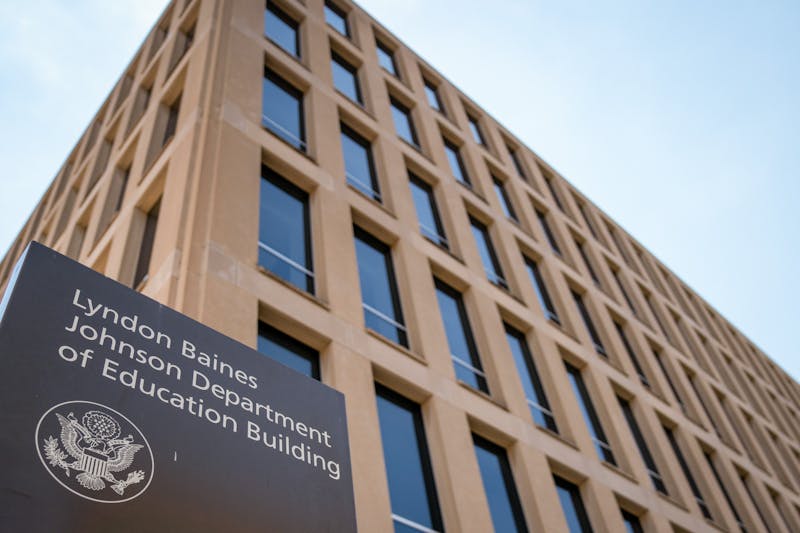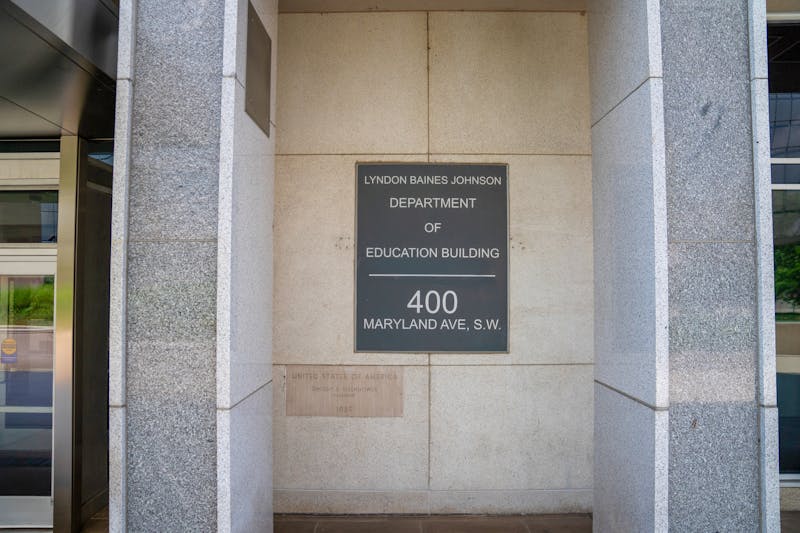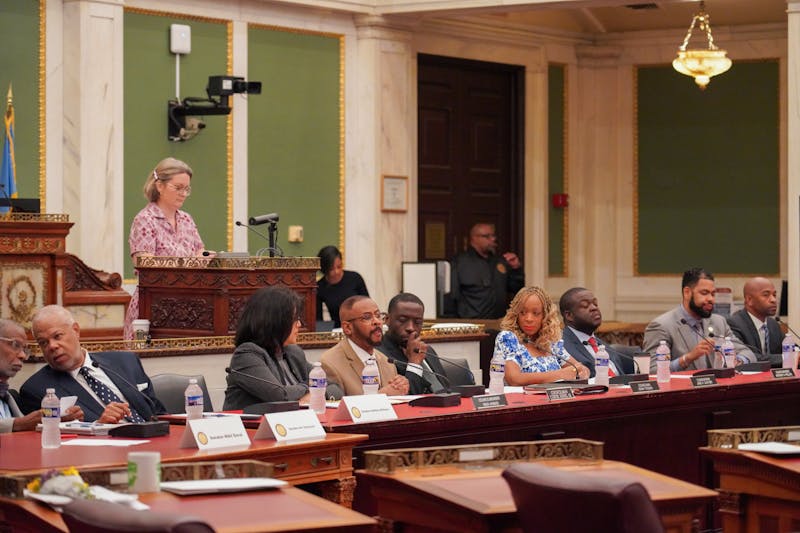
A two-story house with a backyard in the suburbs, a dog or two, a car of my own I would park in the cobblestone driveway after getting home from the job I surely would adore. A kitchen with floor-to-ceiling windows and an island where I would bake banana bread. A porch with a cushioned Avalon patio chair where I would sit and read, watching kids on their bikes, unafraid of the dark — unlike the way I grew up.
This two-story house lived inside my head, an escape to what I witnessed every day in my home country: my mom telling me to never take my phone out on the street, to be careful of the clothes I chose to wear, to never go out after dark without an adult, to avoid wearing jewelry on public transportation. Living inside my head, the kids biking on the American street contrasted my own childhood plagued by fear and bad news every day: corruption scandals, out-of-control protests, growing guerrilla groups, massacres, enforced disappearances, and hordes of people coming to Colombia, because even if our situation was bad, theirs was worse. The imaginary kids in my head, biking in the suburbs, would never have to worry about their entire country crumbling to pieces before their eyes.
For as long as I can remember, I always wanted to run and escape the dark. And the United States seemed like the perfect, sunny land of opportunity and prosperity to run towards. The decision was made before I could even process all the factors governing immigration, studying abroad, and even the United States’ own flaws.
Why? Why do we run towards the United States, eyes closed and full of hope that we will get the two-story home that cradles the American Dream?
Emma Luque — Mexicali, Mexico
College junior and cognitive science major
For Luque, leaving was always the plan. She grew up near the border, so she got to see the contrast between the American and Mexican side. The United States seemed “better.” It had everything Mexico lacked: political stability, a growing economy, and a sense of opportunity and innovation. In Mexico, it felt very hard for new things to come as the social setting tended to be quite narrow-minded. There was a pressure of “always having to perform,” but there was also the feeling that one would never fit in.
What drew Luque to Penn wasn’t only the chance to have better opportunities and economic prosperity once she graduated, but also the idea that American culture would be more open-minded than Mexican culture. “In America, people are less scared of new things. In Mexicali, the social environment establishes a fixed routine which people tend to hold on to. Escaping the ordinary seems to be terrifying for some people in my culture,” she said.
At Penn, Luque has been able to enjoy the variety of subcultures, and the size has helped her feel more comfortable than she did back home. People are open-minded and innovative, but that doesn’t take away the fact that not everyone gets treated the same. Meritocracy runs deep within the narrative of the American Dream, but according to Luque, “It is a myth, especially at Penn.”
Lala Mustafa — Baku, Azerbaijan
College junior and international relations and history major, DP opinion columnist
The idea of the American dream was planted in Lala’s head before she could even understand it.
Lala was interested in going somewhere with very strong academics, and she was aware that she would never get that in her home country. However, she also acknowledges that the choice to go to the U.S. wouldn’t have been as clear if she hadn’t grown up surrounded by American media. Perhaps she would have chosen to go to the U.K., which would have been closer to home. “The U.S. turned the balance their way by using media, which is a very effective form of soft power,” she stated.
Young people in her country don’t seem to have faith in the government anymore. They have lost all hope that it will provide them with opportunities and a life free of conflict. Amongst all of the turmoil, the U.S. seems to be a beacon of opportunity and democracy. There’s the idea that “you can make it.” It doesn’t mean they love the U.S., or that the U.S.is their absolute dream but rather that they “just have to do it [leave].”
Being at Penn, Lala sees how she will definitely get the future that she wants. The Ivy League has a considerable amount of resources, which is everything she hoped for. However, sometimes the illusion seems to shatter: “You don’t expect the United States to have the problems you have in your country. It’s the things you are running from, things that are getting in the way of the life you want, you never expect to find them here too.”
Moreover, so much is determined by your race and class in the U.S. Lala sees how even among international students who have made it to the U.S., they’re treated differently by the government. For instance, the visa validity period varies depending on the country they are from: some get a 10-year period, while others must renew on a yearly basis. Even through simple bureaucratic processes, the U.S. government makes a distinction between those they find desirable and easier to integrate into American society and those they don’t.
Juan Pablo Ardila Falla — Bogotá, Colombia
History Ph.D. graduate
The United States is an academic powerhouse, and that’s what motivated Ardila to choose Penn for his Ph.D. American universities could offer everything, and Colombian universities couldn’t. It’s even ironic, perhaps, that he had to leave Colombia in order to access the best resources for researching the history of Colombian independence, which are housed here in the United States.
In Colombia, he had grown up surrounded by the narrative that the United States is the land of opportunity, where if you work enough, you could attain everything you wished for. However, Ardila was well aware that the stereotypical American Dream was not part of his life plan; he didn’t want the house in the suburbs and a backyard. Instead, he was after academic opportunities and resources.
He acknowledged how embedded this narrative is in Colombia, where everyone believes that after moving to the United States, they will automatically get a better job and life. This dream quickly shatters when they realize the scale is tipped. The American Dream operates for the white man, and people are faced with this reality when, after landing in the United States, they are denied jobs based on their race.
Ardila explained that the American Dream is an illusion that feeds on the lack of resources many people face, growing stronger as the economic condition of their home country gets harsher. He questioned, “If you are wealthy, why would you need to have an American Dream?”
Kyilah Terry — Chicago, Ill.
Political science Ph.D. candidate
Even though Terry is American, both of her grandparents are immigrants, and she grew up with stories where the American Dream was ever-present. Terry describes having different definitions of the American Dream throughout phases of her life.
In 2008, when Barack Obama became president of the United States, everything seemed possible. As a Black woman, Terry saw Obama as a beacon of equality and prosperity, a promise that you could continuously advance economically, socially, and politically in spite of your background. However, this idea started to erode when she realized that people still hated Obama because of his race, but more importantly, that many people in the United States were still struggling, unable to afford groceries and housing. The dream died for her when she was an undergraduate student working on the border during the Trump administration, teaching refugees to read in English. She thought, “This dream does not exist. How could it be if this is the United States, the land of opportunity, and the oppressive forces never went away?” The dissonance between the American Dream and American reality was thunderous.
Still, Terry recognizes how much of a driving force the American Dream still is. Working in refugee camps, she sees how people every day strive to come to the United States to escape from political instability and other hardships. Terry is even aware how her presence as a Black woman in those camps is a picture of the American dream, feeding the idea that the United States is a place for everyone, a place of opportunity. And yet, it operates only for a certain population. Terry describes the American Dream like “liminal living”: You are always close to the American Dream but never able to reach it because race, gender, and class will always keep you isolated.
—
When people see me, a lower-middle-class Colombian sitting in a classroom at Penn, they might think “She made it.” It’s the American Dream, and I hold it in my hands. But do I really? Do we really? Does sitting in an Ivy League classroom erase the fact that I’ll never be a white American citizen and, because of that, I’ll never be up for the same opportunities? Studying at Penn doesn’t change the fact that expired visas sit in the back of my mind, constantly reminding me that I have one shot to get a job and make things right. Yet, the control is not in my hands: I didn’t pick my nationality, but I know it is something for others to pick apart. I can do everything right, but sadly, whether my two-story house becomes a reality is not up to me or what I’m capable of.
However, the American Dream is not dead. It drew us out of our countries and still motivates us to keep going every day. Yet, the question remains: In spite of how close we get to it, will we be able to fully reach the American Dream one day?
MARIANA MARTINEZ is a College sophomore from Bogotá, Colombia. Her email is marmari@sas.upenn.edu.
The Daily Pennsylvanian is an independent, student-run newspaper. Please consider making a donation to support the coverage that shapes the University. Your generosity ensures a future of strong journalism at Penn.
Donate







